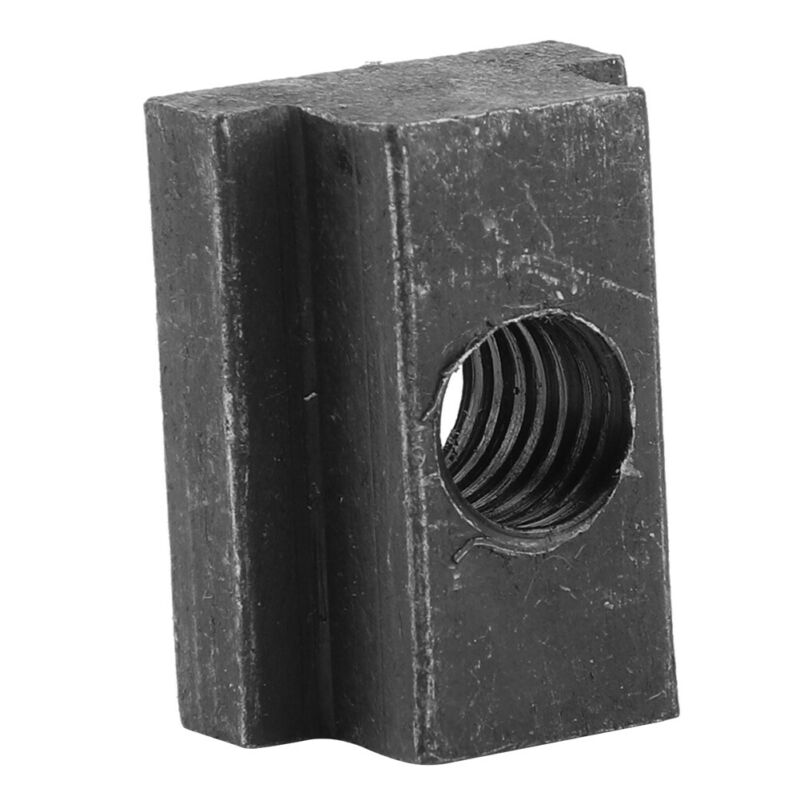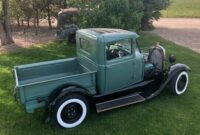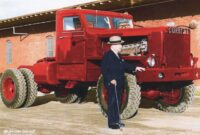Bed Rails For Pickup Trucks: Enhancing Utility, Protection, and Style pickup.truckstrend.com
The modern pickup truck is a versatile workhorse, capable of hauling everything from construction materials to camping gear. While these vehicles are built tough, their open beds can sometimes leave cargo vulnerable or lack sufficient tie-down points. This is where bed rails for pickup trucks come into play. Far more than just an aesthetic upgrade, these robust accessories offer a blend of protection, enhanced functionality, and a customized look, transforming your truck bed into an even more capable and secure space.
This comprehensive guide will delve deep into the world of truck bed rails, exploring their various types, benefits, installation processes, and essential considerations to help you make an informed decision and maximize your truck’s potential.
Bed Rails For Pickup Trucks: Enhancing Utility, Protection, and Style
What Exactly Are Pickup Truck Bed Rails?
At their core, pickup truck bed rails are sturdy bars or tubes that run along the top edge of a truck’s bed, typically from the bulkhead (the front of the bed, nearest the cab) to the tailgate. They are designed to fit snugly over the bed rails of the truck itself, often utilizing existing stake pockets or requiring minor drilling for a secure fit.
Constructed from durable materials like stainless steel, aluminum, or powder-coated steel, bed rails serve multiple purposes. They act as a protective barrier, preventing scratches and dents to the truck’s paintwork when loading or unloading cargo. Crucially, many bed rail designs incorporate integrated tie-down points, providing secure anchors for straps and ropes to firmly secure your payload, preventing shifting and potential damage during transit. Beyond their practical utility, bed rails also add a rugged, finished look to a truck, enhancing its overall aesthetic appeal.
Why Install Bed Rails? Unpacking the Benefits
The decision to install bed rails goes beyond mere aesthetics. They offer a multitude of tangible advantages for any truck owner:
- Cargo Protection: One of the primary benefits is safeguarding your truck’s bed rails. When loading heavy or awkward items, it’s easy to scrape or dent the top edges of the bed. Bed rails act as a sacrificial layer, absorbing impacts and preventing direct damage to your truck’s paint and sheet metal, preserving its appearance and resale value.
- Enhanced Tie-Down Points: Many trucks come with limited tie-down cleats inside the bed. Bed rails often feature integrated loops, cleats, or channels along their length, providing a wealth of additional and easily accessible tie-down points. This significantly improves cargo security, allowing you to strap down even irregularly shaped loads more effectively and safely.
- Accessory Mounting: Bed rails open up a world of customization possibilities. They provide a sturdy platform for mounting various accessories, such as headache racks, ladder racks, additional lighting, flag mounts, or even specialized toolboxes that utilize the rail for support. This expands your truck’s utility for both work and recreation.
- Aesthetic Enhancement: Beyond their practical uses, bed rails undeniably add a rugged, finished, and personalized look to any pickup. Available in various finishes like polished chrome, sleek black powder coat, or brushed stainless steel, they can complement your truck’s existing trim or provide a striking contrast, boosting its visual appeal.
- Improved Resale Value: A well-maintained truck with useful accessories often fetches a better price on the used market. Bed rails signal to potential buyers that the truck has been cared for and that its owner invested in practical upgrades, enhancing its perceived value.


Types of Bed Rails: Choosing the Right Fit
Bed rails come in a variety of styles, materials, and mounting options, each with its own advantages. Understanding these differences is key to selecting the perfect set for your truck and needs:
- Mounting Styles:
- Stake Pocket Mount: These are the most popular and easiest to install. They utilize the existing stake pockets found on most truck beds. Often, they use a "no-drill" design with expandable clamps that secure the rail from within the stake pocket. This makes installation straightforward and reversible, without modifying your truck.
- Drill-On Mount: Some heavy-duty or older bed rails may require drilling into the truck’s bed rails for a more permanent and robust attachment. While more involved, this method can offer superior strength and load-bearing capacity for extreme applications.
- Length:
- Full-Length: These rails extend the entire length of the bed, from the bulkhead to the tailgate, offering maximum protection and tie-down versatility.
- Short/Cab-Length: Less common, these rails might only cover a portion of the bed, often near the cab, sometimes paired with a headache rack.
- Material and Finish:
- Stainless Steel: Known for its excellent corrosion resistance and polished, high-gloss appearance. It’s durable but can be more expensive.
- Aluminum: Lightweight and corrosion-resistant, aluminum rails are a good choice if weight is a concern. They often come in polished or black powder-coated finishes.
- Powder-Coated Steel: Offers robust strength and a durable, chip-resistant finish, typically black. It’s a popular choice for those seeking a rugged, stealthy look and good value.
- Chrome Plated: Provides a classic, shiny look, often made from steel with a chrome finish. Requires some maintenance to prevent pitting.
- Design/Profile:
- Round Tubes: Classic and common, offering a clean, simple look.
- Square/Rectangular Tubes: Can provide a more modern, robust appearance and sometimes better surface area for mounting certain accessories.
- Integrated Cleats/Loops: Many designs incorporate specific tie-down points directly into the rail’s structure.

Installation Guide: A Step-by-Step Approach
Installing bed rails is a manageable DIY project for most truck owners, especially with stake pocket mounted systems. Here’s a general guide:
- Gather Your Tools: You’ll typically need a socket wrench set, possibly an Allen wrench set, a tape measure, and a clean cloth. If drilling is required, you’ll also need a drill, drill bits, and possibly a center punch.
- Clean the Bed Rails: Thoroughly clean the top surface of your truck’s bed rails where the new bed rails will sit. Remove any dirt, grime, or wax to ensure a proper fit and prevent debris from getting trapped.
- Identify Stake Pockets (if applicable): Locate the stake pockets on your truck bed. Some trucks may have plastic caps covering them, which will need to be removed.
- Test Fit: Carefully place each bed rail onto your truck’s bed rail to ensure it fits correctly and aligns with the stake pockets or mounting points. Don’t force anything.
- Secure the Front Rail: Start with the rail on the passenger side. If it’s a stake pocket mount, insert the mounting bracket into the front stake pocket and loosely attach the rail. If it’s a drill-on, mark your drilling points carefully.
- Secure the Rear Rail: Move to the rear stake pocket (or drilling point) on the same side. Align the rail and loosely secure it.
- Adjust and Align: Once both ends of the rail are loosely attached, ensure the rail is straight, level, and evenly spaced along your truck’s bed. Make any necessary adjustments.
- Tighten All Fasteners: Systematically tighten all mounting bolts and clamps, working from one end to the other. Do not overtighten, but ensure they are snug and secure. Refer to the manufacturer’s instructions for specific torque settings if provided.
- Repeat for the Other Side: Follow the same steps for the driver’s side bed rail.
- Final Inspection: Once both rails are installed, give them a good tug to ensure they are firmly attached. Check for any wobbling or loose connections. Store any removed plastic caps or hardware in case you ever remove the rails.
DIY vs. Professional Installation: While most stake pocket bed rail installations are straightforward, if you’re uncomfortable with tools, don’t have the time, or your chosen rails require drilling, professional installation by an auto accessory shop is a viable and stress-free option.
Important Considerations Before Purchase
Before you commit to a set of bed rails, consider these crucial factors to ensure you get the right product for your needs:
- Truck Make, Model, and Year: This is paramount. Bed rails are highly specific to truck models due to varying bed lengths, widths, and stake pocket locations. Always verify compatibility.
- Existing Accessories: Do you have a tonneau cover, tool box, or headache rack? Some bed rail designs might interfere with these accessories, especially if they mount over the bed rails. Look for "tonneau cover compatible" bed rails if needed.
- Material and Finish Durability: Consider your climate and usage. If you live in a rust-prone area or frequently use your truck for heavy work, invest in highly durable materials like stainless steel or high-quality powder-coated steel.
- Weight Capacity (for Tie-Downs): If you plan to use the rails extensively for securing heavy loads, check if the manufacturer specifies a weight rating for the integrated tie-down points.
- Budget: Bed rails vary widely in price based on material, brand, and features. Set a budget but prioritize quality and compatibility over the lowest price.
- Brand Reputation and Warranty: Research reputable brands known for quality truck accessories. A good warranty indicates the manufacturer stands behind their product.
Maintenance and Care for Longevity
To ensure your bed rails last for years and continue to look their best, a little maintenance goes a long way:
- Regular Cleaning: Wash your bed rails whenever you wash your truck. Use mild soap and water. For polished finishes, a non-abrasive polish can help maintain their shine.
- Inspect Fasteners: Periodically check all mounting bolts and clamps to ensure they are still tight, especially after driving on rough roads or carrying heavy loads. Tighten if necessary.
- Address Rust/Corrosion: For steel rails, promptly address any signs of rust or chipped powder coat. Touch-up paint or rust-inhibiting products can prevent further spread. Stainless steel and aluminum are more resistant but still benefit from cleaning.
- Avoid Harsh Chemicals: Do not use abrasive cleaners, strong solvents, or steel wool, as these can damage the finish of your bed rails.
Beyond Protection: Creative Uses for Bed Rails
While protection and tie-downs are primary, bed rails can inspire creative utility:
- Flag Mounts: Easily attach flags for parades, off-road events, or simply showing patriotism.
- Auxiliary Lighting: Mount small LED lights along the rails to illuminate the truck bed at night, useful for camping or working after dark.
- Custom Racks: With a bit of fabrication, bed rails can serve as the base for custom bike racks, kayak carriers, or specialized tool mounts.
- Cargo Management Systems: Some rail systems are designed to integrate with sliding tie-downs or cargo dividers, offering even more versatile load management.
Price Guide: Typical Bed Rail Costs
Prices for pickup truck bed rails can vary significantly based on material, finish, brand, and specific features. This table provides a general range:
| Type/Material | Mounting Style | Typical Price Range (USD) | Key Features & Notes |
|---|---|---|---|
| Basic Powder-Coated Steel | Stake Pocket/Drill-On | $100 – $250 | Durable, black finish, good value. May have basic tie-downs. |
| Polished Stainless Steel | Stake Pocket | $200 – $450 | Corrosion-resistant, shiny aesthetic, often integrated cleats. |
| Black Anodized Aluminum | Stake Pocket | $180 – $400 | Lightweight, corrosion-resistant, sleek matte black finish. |
| Heavy-Duty Steel | Drill-On | $250 – $500+ | Max strength for heavy use, often industrial look, robust tie-downs. |
| Premium Brands/Features | Various | $350 – $600+ | Superior materials, advanced designs, specialized tie-downs, brand warranty. |
Disclaimer: These are approximate retail prices and can fluctuate based on specific truck models, promotions, and retailers. Installation costs (if professional) are separate.
Frequently Asked Questions (FAQ)
Q: Do bed rails fit all pickup trucks?
A: No, bed rails are specifically designed to fit certain truck makes, models, and years due to variations in bed length, width, and stake pocket locations. Always confirm compatibility before purchasing.
Q: Are bed rails difficult to install myself?
A: Most stake pocket mounted bed rails are relatively easy to install, requiring basic hand tools and about 30-60 minutes. Drill-on models are more involved and might be better suited for professional installation if you’re not comfortable drilling into your truck.
Q: Can I use bed rails with a tonneau cover?
A: It depends on the type of tonneau cover and bed rails. Many bed rails are designed to be "tonneau cover compatible," meaning they mount in a way that doesn’t interfere with the cover’s operation. However, some tonneau covers (especially those that clamp over the bed rails) may conflict. Always check product specifications for compatibility.
Q: What material is best for bed rails?
A: The "best" material depends on your priorities. Stainless steel offers excellent corrosion resistance and a polished look. Powder-coated steel is strong and durable for a black, rugged appearance. Aluminum is lightweight and also corrosion-resistant. Consider your climate, aesthetic preference, and budget.
Q: Do bed rails protect against theft?
A: While bed rails primarily offer protection against physical damage and enhance cargo security with tie-downs, they do not inherently protect against cargo theft. For anti-theft measures, consider a locking tonneau cover or dedicated locking cargo solutions.
Conclusion
Pickup truck bed rails are a truly invaluable accessory for any truck owner looking to enhance their vehicle’s utility, protect their investment, and add a touch of personal style. From preventing unsightly scratches and dents to providing crucial tie-down points for secure cargo transport, their benefits are clear. With a variety of types, materials, and mounting options available, there’s a perfect set of bed rails out there for every truck and every need. By understanding the considerations and following proper installation and maintenance, you can ensure your bed rails serve you well for years to come, making your pickup truck even more capable and ready for any adventure or task.



